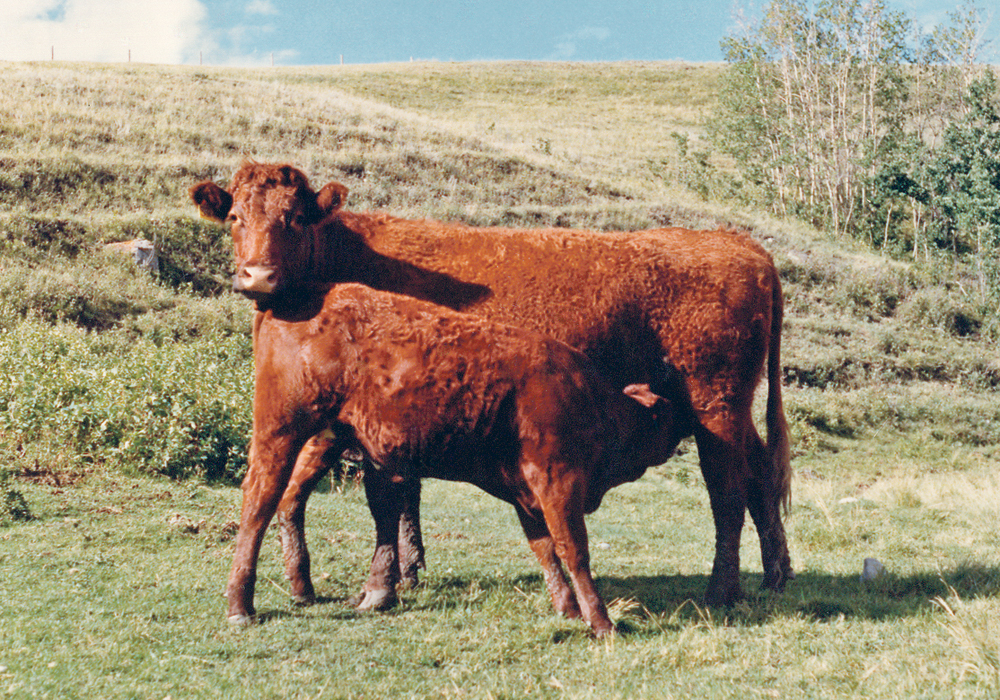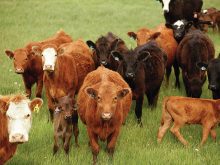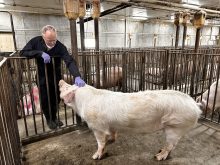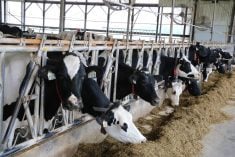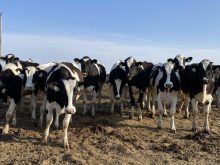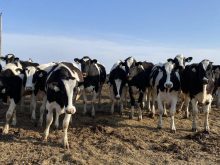If you drive into many small towns on the Prairies with a livestock auction yard at this time of year, you might be greeted by the chorus of bawling calves. Most of these calves are headed to feedlots after being recently weaned at their home ranches.
Weaning is a stressful event for calves and it is often compounded by other stressors, such as transportation, mixing with other cattle at the auction market or feedlot, and rapid fluctuations in weather and temperatures.
One sign of stress is the vocalization from both the calves and the cows on the home farm.
Read Also

Beef check-off collection system aligns across the country
A single and aligned check-off collection system based on where producers live makes the system equal said Chad Ross, Saskatchewan Cattle Association chair.
We know that weaning is an important risk factor for pneumonia. Respiratory diseases tend to occur at a much higher rate in recently weaned calves, and anything that can be done to reduce that stress will probably improve the welfare of the calves and perhaps reduce the risk of respiratory disease.
A number of weaning strategies have been developed in an attempt to reduce the stress of weaning. Two-stage weaning refers to a strategy where anti-suckling nose paddles are placed in calves for four to seven days while they remain with their dams. Then the paddles are removed and the calves can be separated from the dams.
It allows the calves to be weaned in the presence of their mothers, and research shows that these calves vocalize less, spend less time walking and pacing and consume more feed than calves that are abruptly weaned.
A similar strategy, known as fence-line weaning, separates the calves for three to four days along a fence line where they can still hear, smell and see each other without allowing suckling. It also has been demonstrated to reduce the behavioural signs associated with the stress of weaning.
However, despite research that demonstrates the benefits, it seems like few producers use these lower-stress weaning methods.
Dr. Melissa Moggy and Dr. Claire Windeyer, along with other researchers at the University of Calgary and the University of Saskatchewan, evaluated weaning strategies as part of the Western Canadian Cow Calf Surveillance project in a 2017 paper in the Journal of Animal Science.
The study showed that 70 percent of western Canadian beef cow-calf producers participating in that study used abrupt weaning methods, 19 percent used fence-line weaning and only four percent utilized two stage (nose tags) weaning. Six percent of the producers reported using more than one method of weaning, which might mean that they abruptly wean some of their calves and use a low-stress method for another group.
The study also showed that 52 percent of producers were selling calves within one to two days of weaning.
Farms with a backgrounding or stocker operation were almost three times more likely to use a non-abrupt weaning method than herds that didn’t have a backgrounding or stocker operation. These producers probably have facilities that allow them to use some of the low-stress methods, but they also probably are more likely to reap the benefits of lower treatment rates for respiratory disease and having calves get on feed faster than producers who send their calves to an auction market.
Moggy’s paper also probed some of the reasons for these choices regarding weaning management. Labour, costs and logistics were all reasons that producers gave for not using low-stress weaning methods. Obviously, two-stage weaning requires extra handling of calves, and not all producers have facilities that would be conducive to fence-line weaning.
In addition, there are few economic incentives for producers who are selling their calves.
Perhaps your operation’s management system isn’t conducive to practising fence-line weaning or two-stage weaning. There are still some other things you can do to reduce the stressors at this time of year.
You can practice low-stress cattle handling techniques when working with your cattle around weaning time. Keeping cattle calm and using well-designed handling facilities can help to reduce the stress of this event. You can also make sure that you separate other stressful events from the timing of weaning.
Management chores such as castration and dehorning should be done at an early as age as possible and should definitely not be done at the time of weaning. If you want to vaccinate your calves, this should also be done at least several weeks before weaning.
I know many producers who swear by this vaccination strategy, even though it involves an additional day of separating and handling calves before the weaning event.
Other strategies that may help include strategies that introduce the calves to stored feeds prior to weaning through creep feeding or bunk feeding.
As well, if you can separate the time of weaning from the time of transportation, you can at least separate the stress of transportation, and mixing with other cattle from the stress of weaning.
Hopefully, as our industry learns to adopt more of these practices and financially rewards those producers who practise them, we can reduce the number of bawling calves we see arriving at our auction markets and feed yards and reduce the need for antimicrobial use to treat and prevent respiratory disease as well.
John Campbell is a professor in the department of Large Animal Clinical Sciences at the University of Saskatchewan’s Western College of Veterinary Medicine.



